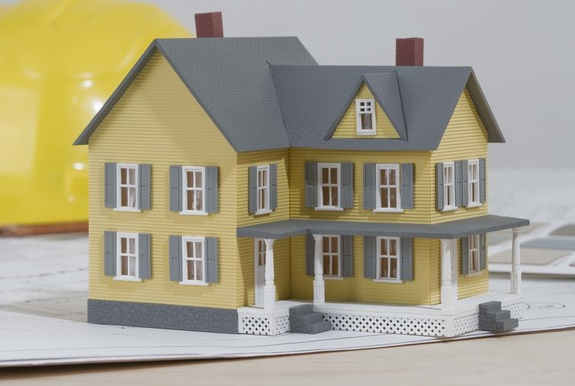Introduction
Smart homes have become an increasingly popular topic in recent years, with more and more homeowners looking to take advantage of the latest technology to improve their living spaces. A smart home is a house that utilizes a network of sensors, controllers, and devices to automate various functions and improve overall functionality.
Smart homes provide a range of benefits, including enhanced comfort, energy savings, improved security and safety, and better home management. In this blog post, we will explore the components of a smart home, the benefits of smart homes, the technology behind them, common smart home devices, challenges and concerns, and the potential future developments in this exciting field.
Global Smart Homes Market was valued at USD 113.5 Billion and it is expected to reach USD 503.1 billion between 2023 and 2032, this market is estimated to register the highest CAGR of 16.8%.
Components of a Smart Home
To create a smart home, several components are required to work together to automate various functions and improve functionality. Some of the main components of a smart home include
Sensors: These are devices that are used to detect changes in the environment, such as temperature, humidity, motion, and light. Sensors are used to trigger various actions within a smart home system, such as turning on the lights when someone enters a room.
Controllers: These are devices that are used to manage and control the various functions within a smart home system. Controllers can be smartphones, tablets, or dedicated smart home hubs.
Devices: These are the various appliances and gadgets that make up a smart home system, such as smart thermostats, lighting, door locks, and security cameras. These devices are connected to the smart home system and can be controlled remotely or automated through various triggers.
Connectivity: A reliable internet connection is essential for a smart home system to work effectively. The devices within the system need to be connected to the internet to receive commands and transmit data.
Software: Smart home software is the backbone of the system, and it manages the interactions between the various components. Smart home software can be used to create schedules, set up triggers, and customize various settings.
By bringing together these components, a smart home can automate various functions and improve overall functionality, making life more comfortable, convenient, and secure.
Benefits of Smart Homes
Smart homes offer a range of benefits to homeowners, including
Increased comfort and convenience: Smart homes can automate various tasks, such as turning on lights, adjusting the thermostat, and playing music, making life more comfortable and convenient.
Energy savings: By automating various tasks, smart homes can help homeowners save energy and reduce their utility bills. For example, smart thermostats can learn a homeowner’s preferences and adjust the temperature accordingly, reducing energy consumption.
Enhanced security and safety: Smart home security systems can monitor the home for intruders and send alerts to homeowners’ smartphones. Smart locks can also be used to secure the home and control access to certain areas.
Improved home management: Smart home systems can be used to manage various aspects of the home, such as monitoring energy usage, tracking water consumption, and controlling appliances remotely.
Accessibility: Smart home systems can make homes more accessible for people with disabilities or mobility issues by automating various tasks and providing remote control of appliances and devices.
Smart Home Technology
Smart home technology is constantly evolving, with new advancements being made every year. Some of the key technologies that are used in smart homes include:
Voice assistants: Voice assistants, such as Amazon Alexa and Google Assistant, allow homeowners to control their smart home devices using voice commands. This technology has become increasingly popular in recent years and has made it easier for people to control their smart homes.
Artificial intelligence (AI): AI is being used in smart home systems to analyze data and make predictions about homeowner behavior. This technology can be used to learn a homeowner’s preferences and automate various tasks accordingly.
Internet of Things (IoT) devices: IoT devices are connected devices that can be controlled remotely using a smartphone or tablet. These devices include smart thermostats, smart lighting, and smart security systems.
Home automation hubs: Home automation hubs are devices that are used to manage and control the various smart home devices in a home. These hubs can be controlled using a smartphone or tablet and can be used to create schedules, set up triggers, and customize various settings.
Energy management systems: Energy management systems are used to monitor energy usage in a home and provide insights into how to reduce energy consumption. These systems can be used to control various devices, such as smart thermostats, to reduce energy usage and save money on utility bills.
Common Smart Home Devices
Smart homes can be equipped with a wide range of devices, each serving a specific purpose. Here are some of the most common smart home devices:
Smart thermostats: Smart thermostats can learn a homeowner’s temperature preferences and adjust the temperature accordingly. They can also be controlled remotely using a smartphone or tablet.
Smart lighting: Smart lighting systems allow homeowners to control their lights remotely and set schedules for when lights should turn on and off.
Smart locks: Smart locks can be used to secure a home and control access to certain areas. They can be controlled using a smartphone or tablet and can also be set to automatically lock and unlock based on certain triggers.
Smart security cameras: Smart security cameras can be used to monitor a home for intruders and send alerts to a homeowner’s smartphone if any suspicious activity is detected.
Smart smoke detectors: Smart smoke detectors can alert homeowners if smoke is detected in the home and can send alerts to a smartphone or tablet.
Smart home hubs: Smart home hubs are devices that are used to manage and control the various smart home devices in a home. They can be controlled using a smartphone or tablet and can be used to create schedules, set up triggers, and customize various settings.
Smart speakers: Smart speakers, such as Amazon Echo and Google Home, can be used to control various smart home devices using voice commands.
Smart appliances: Smart appliances, such as refrigerators and washing machines, can be controlled remotely using a smartphone or tablet.
Challenges and Concerns
While smart homes offer many benefits, there are also some challenges and concerns that homeowners need to be aware of. Here are some of the main challenges and concerns associated with smart homes:
Security: Smart homes are vulnerable to cyber attacks, which can compromise the security of a home and put personal data at risk. Homeowners need to take steps to secure their smart home devices, such as using strong passwords and keeping software up to date.
Compatibility: With so many different smart home devices on the market, compatibility can be a challenge. Homeowners need to make sure that the devices they choose are compatible with their existing smart home systems.
Cost: Smart home devices can be expensive, and the cost of outfitting an entire home can add up quickly. Homeowners need to carefully consider their budget and prioritize which devices they need.
Complexity: Smart home systems can be complex, and homeowners may need to invest time and effort to set up and maintain them. This can be a challenge for those who are not tech-savvy.
Privacy: Smart home devices collect a lot of data, which can raise concerns about privacy. Homeowners need to be aware of what data is being collected and how it is being used.
Future of Smart Homes
The future of smart homes is exciting and promising, with new technologies and advancements being made every year. Here are some of the trends that we can expect to see in the future of smart homes:
More AI and automation: Artificial intelligence will continue to play an increasingly important role in smart homes, with advanced algorithms and machine learning algorithms being used to automate various tasks and personalize the home experience.
Increased connectivity: Smart homes will become even more connected, with devices being able to communicate with each other seamlessly. This will enable more complex automation and make it easier for homeowners to control their homes.
Enhanced security: Smart home security will become more advanced, with technologies such as biometric authentication and facial recognition being used to secure homes.
Energy efficiency: Smart homes will become even more energy-efficient, with new technologies being developed to reduce energy consumption and save homeowners money on utility bills.
Smart appliances: Smart appliances will become more widespread, with refrigerators, washing machines, and other appliances being able to communicate with each other and with homeowners to provide a more personalized and efficient experience.
Health and wellness: Smart homes will become more focused on health and wellness, with technologies such as air quality sensors and sleep monitoring systems being integrated into smart homes to promote better health.
smart homes will become even more efficient, convenient, and personalized, offering homeowners a better and more comfortable living experience.
Conclusion
In conclusion, smart homes offer a range of benefits, including increased convenience, comfort, and security. With the advent of new technologies and advancements in automation and AI, the future of smart homes is promising. However, there are also challenges and concerns that homeowners need to be aware of, such as security vulnerabilities and compatibility issues. As smart homes become more widespread, it is important for homeowners to educate themselves on the technologies being used and take steps to mitigate any potential risks. Overall, the future of smart homes is exciting, and homeowners can look forward to a more comfortable, convenient, and personalized living experience.









